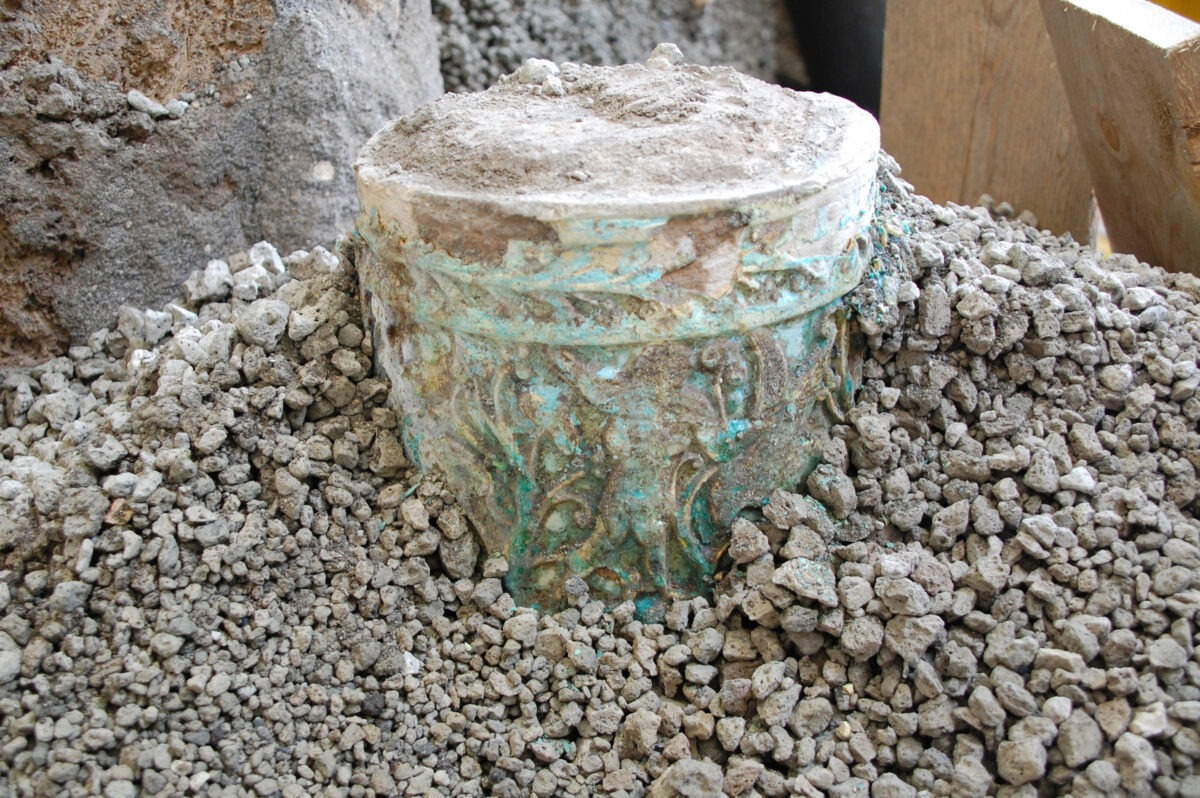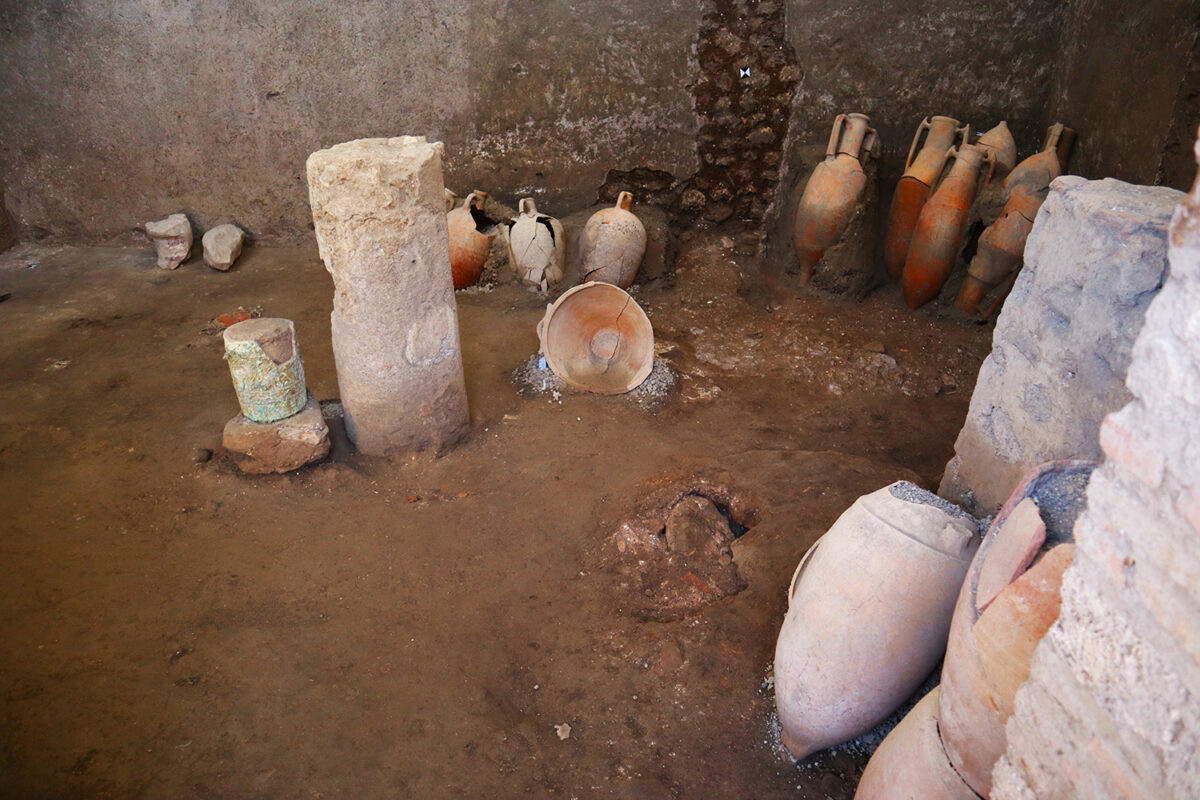In the Archaeological Park of Pompeii, a situla (vase) made of glass paste decorated with hunting scenes in Egyptian style, made in Alexandria, Egypt, was found in the center of the kitchen of the Thermopolium of Regio V, that is, in a kind of “hot table” of the ancient city, a room discovered in 2019. This glazed container, usually widespread in the Vesuvian area as an ornamental element of gardens or reception rooms, had been reused in this case as a kitchen utensil. Ongoing analyses, conducted after the restorations, may perhaps reveal its original contents.
New excavations begun in 2023 in Pompeii’s Regio V, with the aim of improving the conservation of rooms near the Thermopolium, have uncovered service rooms and a small apartment on the second floor, probably inhabited by the managers of the business. In the ground-floor room, equipped with a stove, tools for food preparation-such as mortars and pans-were found, along with numerous wine amphorae from various regions of the Mediterranean.
At the time of the eruption, the room adjoining the Thermopolium served as a service room. The interior spaces appeared to be organized in a functional manner: a small bathroom was located next to the entrance overlooking Balcony Alley, while an area was intended for the storage of amphorae and containers for preserving liquids. The remaining area housed objects used for food processing, cooking, and storage.
Among the most significant artifacts found here is the finely decorated faience situla, a valuable testimony to the intense commercial and cultural exchanges that characterized Pompeii.



The floor above the service room was divided into two small rooms, one of which was frescoed and decorated in the IV style, with illusionistic perspective architecture and a yellow-colored floor. The room was furnished with furniture, some probably covered with polychrome marble slabs, and with personal items stored in richly ornamented wooden boxes.
The project of extraordinary maintenance and securing of these spaces also included the restoration of wall structures and decorative apparatuses that emerged in previous excavations, with the aim of preserving their original integrity and beauty. To protect the rooms from the weather and preserve the finds, removable covers have been installed, designed to harmonize with the archaeological context. In addition, a lighting system will make it possible to enhance the details and better admire the entire context.
“We see here in action a certain creativity in furnishing sacred and profane spaces, namely the domestic altar and the kitchen, with objects that testify to the permeability and mobility of tastes, styles and probably also of religious ideas in the Roman Empire,” explains Park Director Gabriel Zuchtriegel. “And we see this phenomenon here not at an elite level, but in a backroom of a popina, a street food store in Pompeii, that is, at a lower-middle level of local society, which turns out, however, to be essential in the promotion of Eastern cultural and religious forms, including Egyptian cults, but later also Christianity.”
 |
| Pompeii, glazed vase with Egyptian-style hunting scenes found in Thermopolium |
Warning: the translation into English of the original Italian article was created using automatic tools. We undertake to review all articles, but we do not guarantee the total absence of inaccuracies in the translation due to the program. You can find the original by clicking on the ITA button. If you find any mistake,please contact us.